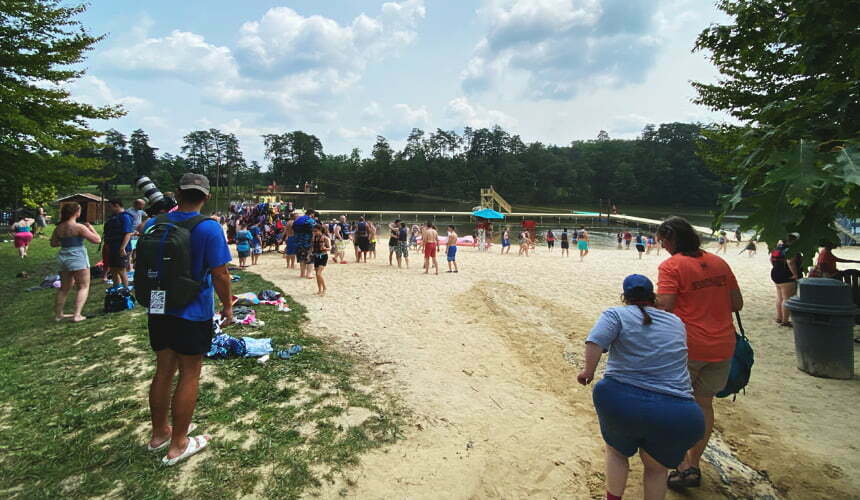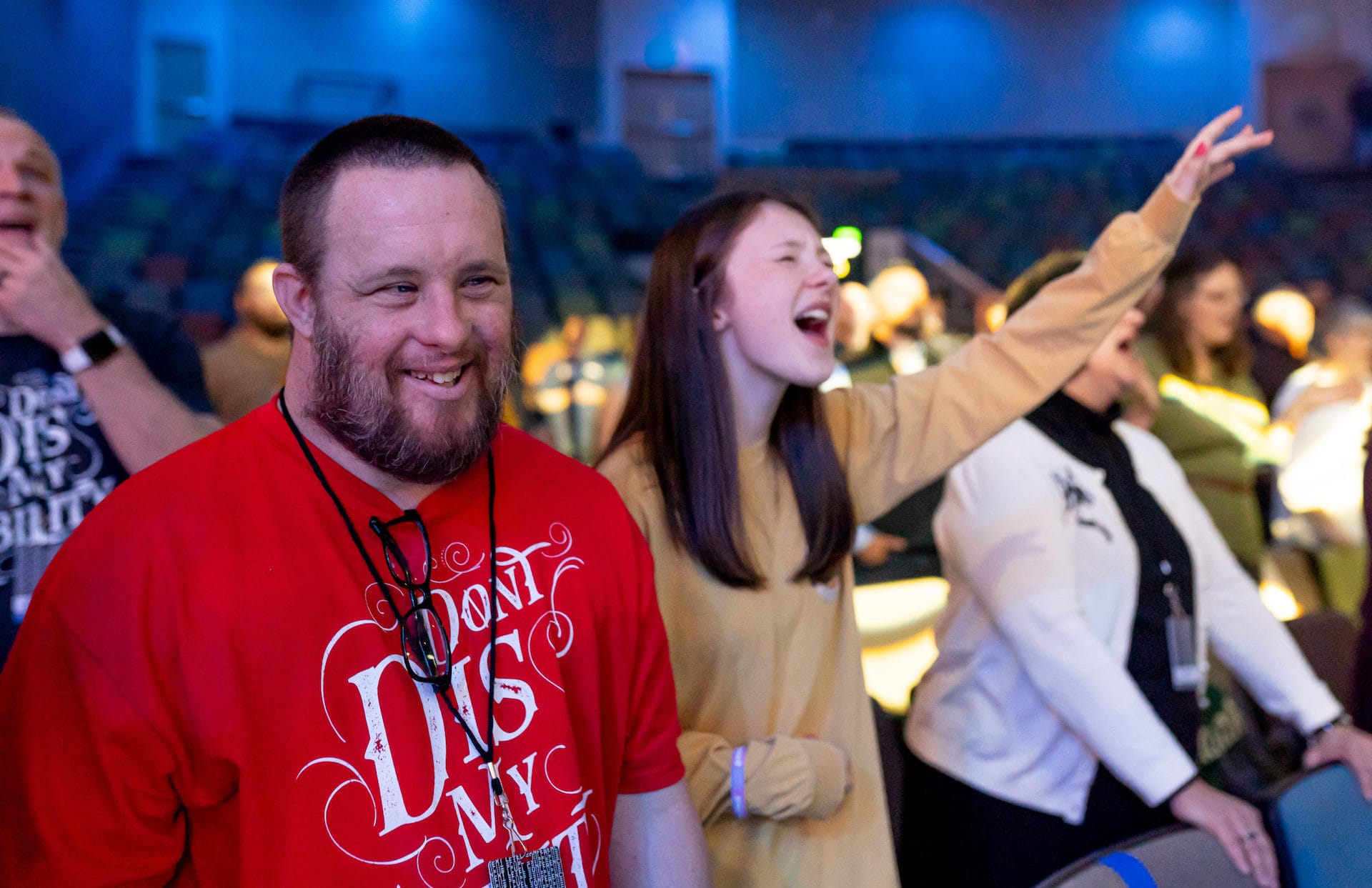

I think a lot about this photo that I took at Camp Freedom.
To the average viewer, it is most likely your typical camp beach photo loaded with sunshine, happy clouds, and happier people. I am not here to dispute that, because the photo is certainly all of that to me as well. Yet, if you were to zoom out about 20 feet and look at me as I took this photo, you would see me standing next to my buddy, the camper I was assigned to for the weekend, who was positioned directly to my right. My buddy, diagnosed with Cerebral Palsy, utilized a motorized wheelchair to navigate his world. Less likely to have been noticed if you zoomed out, would have been the exact spot where we were standing, which was at the end of the paved area directly before the sand and grass began. The beach that initially seemed to be “just right there” suddenly felt so far away, and in an instant, an impossibility for us.
Before I go further, I want to make it clear that as an able-bodied person, I am in no way saying that my weekend partnered with a wheelchair user puts me in the same boat of understanding. I am well aware that I had just a very small glimpse of my camper’s life and what being a wheelchair user means at a place like camp. I would never pretend that I have the exact same understanding based solely on a few days at camp. I do feel comfortable stating that I was given brand new insight into the limitations and frustrations of trying to be a part of a world that is not designed for you and too often does not care to change.
I also want to make sure everyone reading this knows what great lengths this camp goes to make anything and everything accessible. In one conversation we had with the camp manager about future upgrades to make the restrooms more accessible, he agreed and said that this is the weekend where we make it happen.
All of that is well and good, but when you are standing at the edge of the paved area looking out at everyone having fun at the beach, without the ability to go further, that can be a devastating feeling. I remember thinking, “There has to be a way for us to do what everyone else is doing. There just has to be.” With the assistance of another volunteer, we not only made it out to go swimming, but we also went for a kayak ride, doing what everyone else was doing.
That “line in the sand” that we encountered reappeared in various forms throughout the weekend. At meals, all the rectangular tables were positioned to allow maximum seating. Our table was a circular one at the front of the room, which had additional space for wheelchair users to navigate. My camper had a seat at the table, but did he really? Again, I am not slighting the camp as I know they planned everything to allow everyone to participate as fully as possible. I just found myself sitting at the table with my camper, meal after meal, wondering if he was upset about not being able to sit next to his friends.
We ran into a few other situations which were not the most user-friendly for wheelchair users, but we both put a smile on our faces and made the very best of it. After all, can you really expect the zipline toward to be built considering wheelchair users? Probably not. It didn’t stop us, but that presented some unique challenges for us to overcome together.
As I look back on that photo, I remember distinctly the feeling of what it meant to be standing where I was standing. I had the ability to move forward, my camper did not.
It made me think about church and where that line in the sand is for others. If we are called to minister with, and not just to those affected by disability, we have to move the line in the sand. We have to remove it all together. I would argue that every church has a line in the sand somewhere, though it is just placed differently. For some churches, the disability ministry is tucked off into a corner, out of sight from all of the regular churchgoers. For some churches, the disability ministry is non-existent in the first place, making the line in the sand at the front door. The same front door with greeters and smiling faces where everyone is welcome can still be an obstacle for others.
The visual hits me of standing at the main entrance of church, Bible in hand, my buddy right next to me knowing that there is no real place for him. He might as well not go inside in the first place. The line in the sand, once drawn, is nearly impossible to cross, especially on your own.
On social media recently, it was asked, “Could some disabled people not lead, rather than attend services? The assumption that churches response to disabled people is attendance and care can be quite devaluing!” Absolutely those affected by disability can lead. They can lead, they must lead, and the “solution” should always be well beyond just attendance. However, one cannot lead if they do not even feel welcome in the building in the first place. Wouldn’t coming to Christ be far more important than coming to camp, and if so, why are more churches not creating intentional outreach to and with the disability community?


